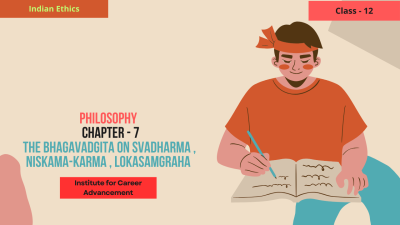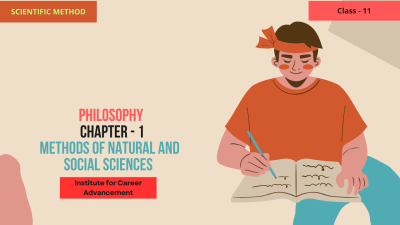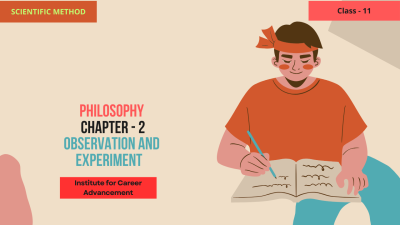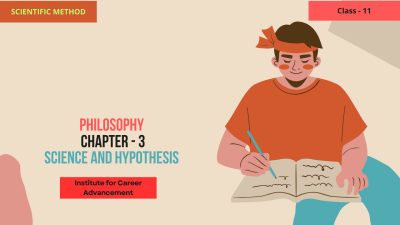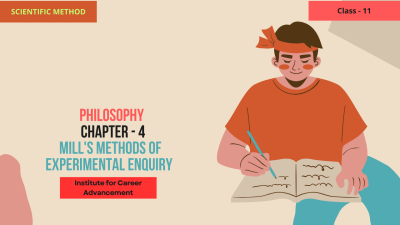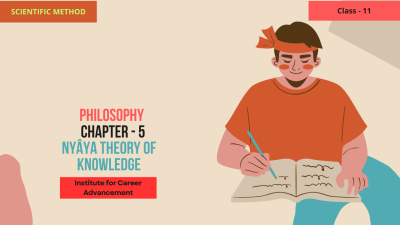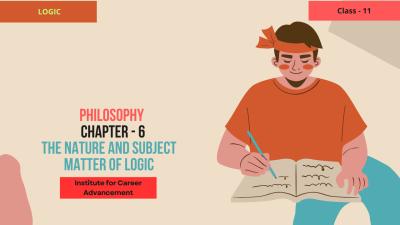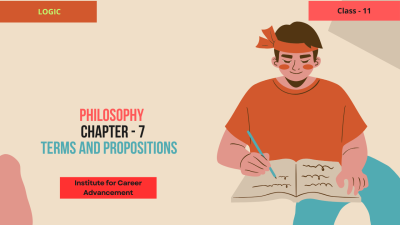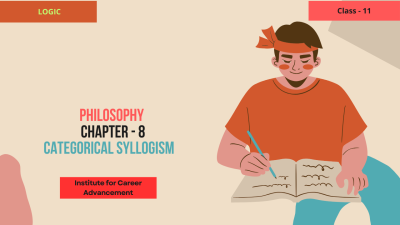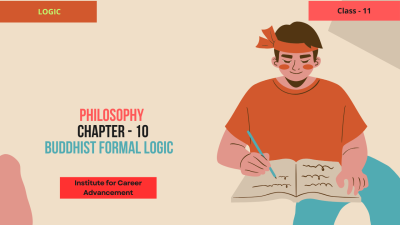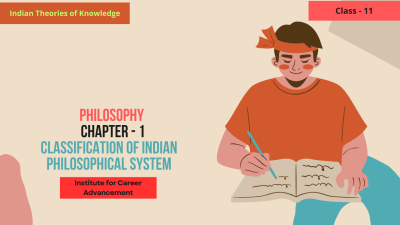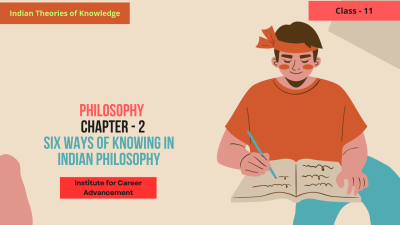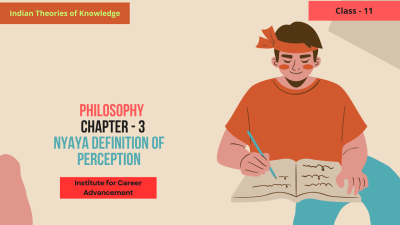The Bhagavadgita on Svadharma , Niskama-Karma , Lokasamgraha - Class 12
Svadharma (One’s Own Duty): Svadharma refers to the duty that each individual must perform based on their nature, abilities, and stage of life. In the Bhagavad Gita, Lord Krishna emphasizes the importance of following one's own duty, even if it is less glamorous or difficult, as it leads to personal growth and fulfillment. Arjuna is advised to perform his duty as a warrior without hesitation, even in the face of challenges. Niskama-Karma (Selfless Action): Niskama-Karma means performing actions without attachment to the results or outcomes. According to Lord Krishna, one should act with dedication and sincerity but remain detached from the fruits of their actions. This principle promotes mental peace and helps in the path to liberation. It teaches that selfless action, done in service to others or to the divine, leads to spiritual growth. Loksamgraha (Welfare of the World): Loksamgraha refers to the concept of working for the collective welfare of society and the world. Lord Krishna urges that individuals must perform their duties not just for personal benefit, but for the greater good of humanity. By doing one's duty selflessly, an individual contributes to the overall harmony and balance of society. These teachings from the Bhagavad Gita guide individuals towards a life of righteousness, selflessness, and social responsibility. স্বধর্ম (নিজের কর্তব্য) স্বধর্ম বলতে সেই কর্তব্যকে বোঝায় যা প্রতিটি ব্যক্তিকে অবশ্যই তাদের প্রকৃতি, ক্ষমতা এবং জীবনের পর্যায়ের উপর ভিত্তি করে সম্পাদন করতে হবে। ভগবদ গীতায়, ভগবান কৃষ্ণ নিজের কর্তব্য অনুসরণ করার গুরুত্বের উপর জোর দিয়েছেন, যদিও এটি কম আকর্ষণীয় বা কঠিন, কারণ এটি ব্যক্তিগত বৃদ্ধি এবং পরিপূর্ণতার দিকে পরিচালিত করে। অর্জুনকে বিনা দ্বিধায়, এমনকি চ্যালেঞ্জের মুখেও যোদ্ধা হিসাবে তার দায়িত্ব পালন করার পরামর্শ দেওয়া হয়। নিষ্কাম-কর্ম (নিঃস্বার্থ কর্ম) নিষ্কাম-কর্ম মানে ফলাফল বা ফলাফলের সাথে সংযুক্ত না হয়ে কর্ম সম্পাদন করা। ভগবান কৃষ্ণের মতে, একজনের নিষ্ঠা ও আন্তরিকতার সাথে কাজ করা উচিত তবে তাদের কর্মের ফল থেকে বিচ্ছিন্ন থাকা উচিত। এই নীতি মানসিক শান্তি বৃদ্ধি করে এবং মুক্তির পথে সহায়তা করে। এটি শিক্ষা দেয় যে, অন্যদের বা ঐশ্বরিকের সেবায় করা নিঃস্বার্থ কাজ আধ্যাত্মিক বিকাশের দিকে পরিচালিত করে। লোকসংগ্রহ (বিশ্ব কল্যাণ) লোকসংগ্রহ বলতে সমাজ ও বিশ্বের সম্মিলিত কল্যাণের জন্য কাজ করার ধারণাকে বোঝায়। ভগবান কৃষ্ণ অনুরোধ করেন যে ব্যক্তিরা কেবল ব্যক্তিগত সুবিধার জন্য নয়, মানবতার বৃহত্তর মঙ্গলের জন্য তাদের দায়িত্ব পালন করতে হবে। নিঃস্বার্থভাবে নিজের দায়িত্ব পালন করে একজন ব্যক্তি সমাজের সামগ্রিক সম্প্রীতি ও ভারসাম্যে অবদান রাখেন। ভগবদ গীতার এই শিক্ষাগুলি মানুষকে ধার্মিক, নিঃস্বার্থ এবং সামাজিক দায়বদ্ধতার জীবনের দিকে পরিচালিত করে।
English
Last updated
Tue, 07-Jan-2025

